List of mammals of Belarus on:
[Wikipedia]
[Google]
[Amazon]
There are forty-eight mammal species in

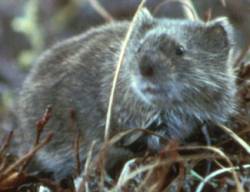
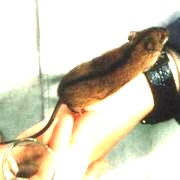 Rodents make up the largest order of mammals, with over 40% of mammalian species. They have two
Rodents make up the largest order of mammals, with over 40% of mammalian species. They have two
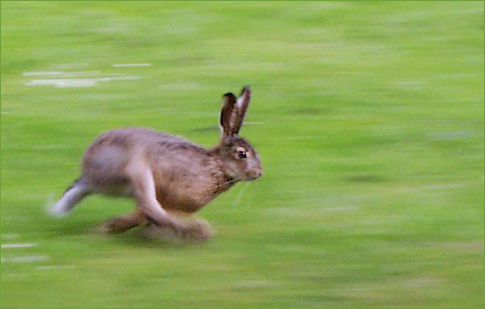 The lagomorphs comprise two families,
The lagomorphs comprise two families,
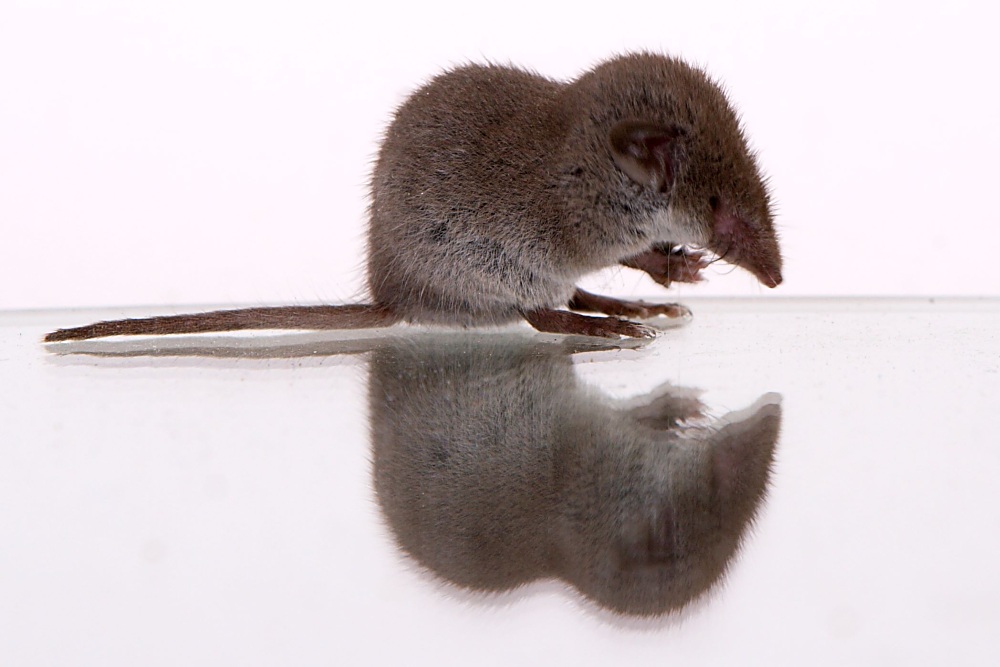 The "shrew-forms" are insectivorous mammals. The shrews and solenodons closely resemble mice while the moles are stout-bodied burrowers.
*Family: Soricidae (shrews)
**Subfamily:
The "shrew-forms" are insectivorous mammals. The shrews and solenodons closely resemble mice while the moles are stout-bodied burrowers.
*Family: Soricidae (shrews)
**Subfamily:

 The bats' most distinguishing feature is that their forelimbs are developed as wings, making them the only mammals capable of flight. Bat species account for about 20% of all mammals.
*Family:
The bats' most distinguishing feature is that their forelimbs are developed as wings, making them the only mammals capable of flight. Bat species account for about 20% of all mammals.
*Family:
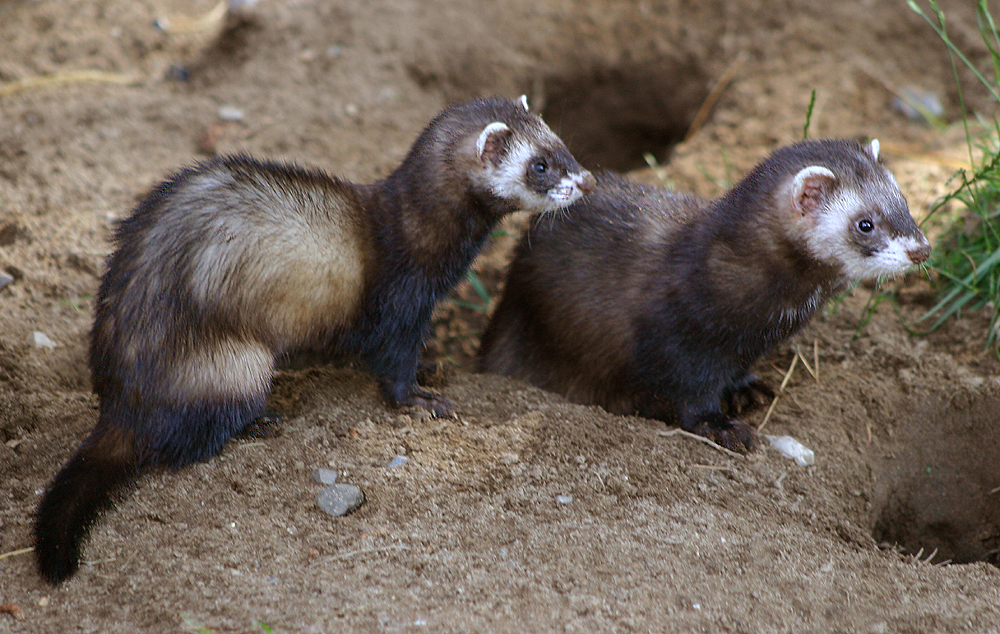
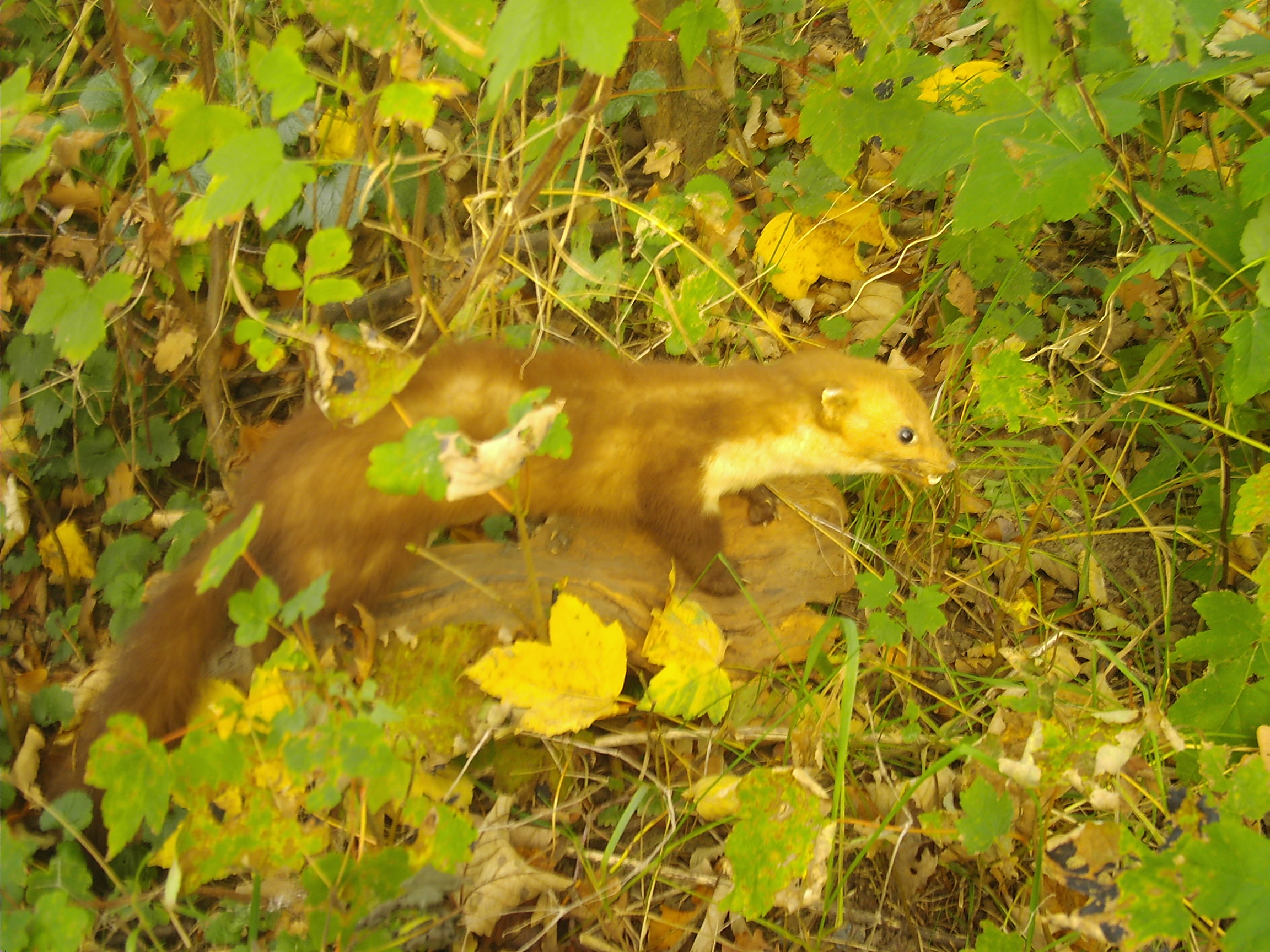 There are over 260 species of carnivorans, the majority of which feed primarily on meat. They have a characteristic skull shape and dentition.
*Suborder:
There are over 260 species of carnivorans, the majority of which feed primarily on meat. They have a characteristic skull shape and dentition.
*Suborder:
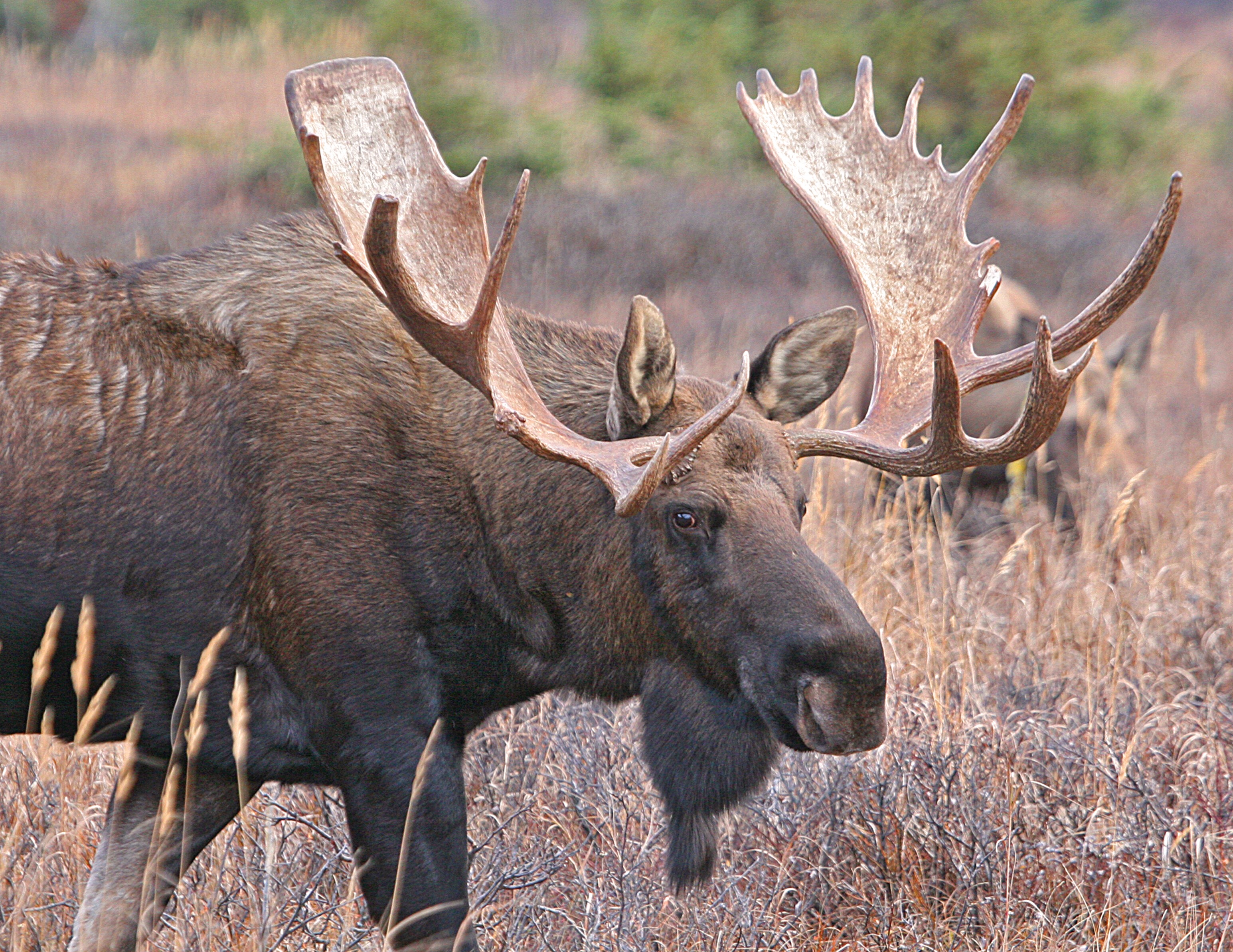 The even-toed ungulates are
The even-toed ungulates are
Belarus
Belarus,, , ; alternatively and formerly known as Byelorussia (from Russian ). officially the Republic of Belarus,; rus, Республика Беларусь, Respublika Belarus. is a landlocked country in Eastern Europe. It is bordered by ...
, of which two are endangered, four are vulnerable, and three are near threatened. One of the species listed for Belarus can no longer be found in the wild.
The following tags are used to highlight each species' conservation status as assessed by the International Union for Conservation of Nature
The International Union for Conservation of Nature (IUCN; officially International Union for Conservation of Nature and Natural Resources) is an international organization working in the field of nature conservation and sustainable use of nat ...
:
Some species were assessed using an earlier set of criteria. Species assessed using this system have the following instead of near threatened and least concern categories:
Order:
Rodent
Rodents (from Latin , 'to gnaw') are mammals of the order Rodentia (), which are characterized by a single pair of continuously growing incisors in each of the upper and lower jaws. About 40% of all mammal species are rodents. They are n ...
ia (rodents)
----

 Rodents make up the largest order of mammals, with over 40% of mammalian species. They have two
Rodents make up the largest order of mammals, with over 40% of mammalian species. They have two incisor
Incisors (from Latin ''incidere'', "to cut") are the front teeth present in most mammals. They are located in the premaxilla above and on the mandible below. Humans have a total of eight (two on each side, top and bottom). Opossums have 18, wher ...
s in the upper and lower jaw which grow continually and must be kept short by gnawing. Most rodents are small though the capybara can weigh up to 45 kg (100 lb).
*Suborder: Sciurognathi
Sciurognathi is a suborder of rodents that includes squirrels, chipmunks, beavers, and many types of mice. The group is characterized by a specific shape to the lower jaw. In sciurognaths, the angular process of the jaw is in the same plane as ...
**Family: Castoridae
The family Castoridae contains the two living species of beavers and their fossil relatives. A highly diverse group of rodents within this family once roamed the earth, but only a single genus is extant today, '' Castor''.
Characteristics
Ca ...
(beavers)
***Genus: '' Castor''
**** Eurasian beaver
The Eurasian beaver (''Castor fiber'') or European beaver is a beaver species that was once widespread in Eurasia, but was hunted to near-extinction for both its fur and castoreum. At the turn of the 20th century, only about 1,200 beavers survi ...
, ''C. fiber''
**Family: Sciuridae
Squirrels are members of the family Sciuridae, a family that includes small or medium-size rodents. The squirrel family includes tree squirrels, ground squirrels (including chipmunks and prairie dogs, among others), and flying squirrels. Squ ...
(squirrels)
***Subfamily: Sciurinae
Sciurinae is a subfamily of squirrels (in the family Sciuridae), uniting the flying squirrels with certain related tree squirrels. Older sources place the flying squirrels in a separate subfamily (Pteromyinae) and unite all remaining sciurids i ...
****Tribe: Pteromyini
*****Genus: '' Pteromys''
****** Siberian flying squirrel
The Siberian flying squirrel (''Pteromys volans'') is an Old World flying squirrel ranging from the Baltic Sea in the west, throughout Northern Asia to the coast of the Pacific Ocean in the east. It is the only species of flying squirrel in Euro ...
, ''P. volans'' possibly extirpated
**Family: Gliridae (dormice)
***Subfamily: Leithiinae
Leithiinae is a subfamily of dormice. It is named after the '' Leithia'', an extinct genus of giant dormouse from the Pleistocene of Sicily.
Classification
Subfamily Leithiinae
*Genus '' Chaetocauda''
**Chinese dormouse, ''Chaetocauda sichuanens ...
****Genus: ''Dryomys
''Dryomys'' is a genus of dormouse. Collectively the members of the genus are referred to as forest dormice, although the type species also goes by the common name forest dormouse.
Species
The species within the genus ''Dryomys'' are:
*''Dryomys ...
''
***** Forest dormouse
The forest dormouse (''Dryomys nitedula'') is a species of rodent in the family Gliridae found in eastern Europe, the Balkans and parts of western Central Asia. It is categorized as being of least concern in the ''IUCN List of Threatened Specie ...
, ''D. nitedula''
****Genus: ''Muscardinus
The hazel dormouse or common dormouse (''Muscardinus avellanarius'') is a small mammal and the only living species in the genus ''Muscardinus''.
Distribution and habitat
The hazel dormouse is native to northern Europe and Asia Minor. It is the ...
''
***** Hazel dormouse
The hazel dormouse or common dormouse (''Muscardinus avellanarius'') is a small mammal and the only living species in the genus ''Muscardinus''.
Distribution and habitat
The hazel dormouse is native to northern Europe and Asia Minor. It is the ...
, ''M. avellanarius''
***Subfamily: Glirinae
The Glirinae are a subfamily of dormice (Gliridae); it contains two extant genera, one being monotypic and the other containing two species:
Subfamily Glirinae
*Genus '' Glirulus''
**Japanese dormouse, ''Glirulus japonicus''
*Genus ''Glis
Gl ...
****Genus: ''Glis
Glis was an electronic music project founded in 2001 by Shaun Frandsen of Seattle, WA. The band experienced several lineup changes and guest appearances, with frontman Shaun Frandsen acting as primary producer, vocalist, songwriter, and instrume ...
''
***** European edible dormouse
The European edible dormouse or European fat dormouse (''Glis glis'') is a large dormouse and one of only two living species in the genus ''Glis'', found in most of Europe and parts of western Asia. Its name comes from the Romans, who ate them as ...
, ''G. glis''
**Family: Cricetidae
The Cricetidae are a family of rodents in the large and complex superfamily Muroidea. It includes true hamsters, voles, lemmings, muskrats, and New World rats and mice. At almost 608 species, it is the second-largest family of mammals, and h ...
***Subfamily: Arvicolinae
The Arvicolinae are a subfamily of rodents that includes the voles, lemmings, and muskrats. They are most closely related to the other subfamilies in the Cricetidae (comprising the hamsters and New World rats and mice). Some authorities place ...
****Genus: '' Arvicola''
*****European water vole
The European water vole or northern water vole (''Arvicola amphibius''), is a semi-aquatic rodent. It is often informally called the water rat, though it only superficially resembles a true rat. Water voles have rounder noses than rats, deep br ...
, ''A. amphibius''
****Genus: '' Clethrionomys''
***** Bank vole, ''C. glareolus''
****Genus: ''Microtus
''Microtus'' is a genus of voles found in North America, Europe and northern Asia. The genus name refers to the small ears of these animals. About 62 species are placed in the genus. They are stout rodents with short ears, legs and tails. They ea ...
''
***** Field vole
The short-tailed field vole, short-tailed vole, or simply field vole (''Microtus agrestis'') is a grey-brown vole, around 10 cm in length, with a short tail. It is one of the most common mammals in Europe, with a range extending from the Atl ...
, ''M. agrestis''
***** Common vole
The common vole (''Microtus arvalis'') is a European rodent.
Distribution and habitat
The common vole is hardly restricted in means of distribution and habitat and inhabits large areas of Eurasia but, apart from the Orkney vole, not the Bri ...
, ''M. arvalis''
***** Tundra vole
The tundra vole (''Microtus oeconomus'') or root vole is a medium-sized vole found in Northern and Central Europe, Asia, and northwestern North America, including Alaska and northwestern Canada. In the western part of the Netherlands, the tundra ...
, ''M. oeconomus'' LC
**Family: Muridae (mice, rats, voles, gerbils, hamsters, etc.)
***Subfamily: Murinae
The Old World rats and mice, part of the subfamily Murinae in the family Muridae, comprise at least 519 species. Members of this subfamily are called murines. In terms of species richness, this subfamily is larger than all mammal families excep ...
****Genus: ''Apodemus
''Apodemus'' is a genus of Muridae (true mice and rats). The name is unrelated to that of the ''Mus'' genus, instead being derived from the Greek ἀπό-δημος (literally ''away from home'').
Taxonomy
Related to the Ryūkyū spiny rats ...
''
***** Striped field mouse, ''A. agrarius''
***** Yellow-necked mouse
The yellow-necked mouse (''Apodemus flavicollis''), also called yellow-necked field mouse, yellow-necked wood mouse, and South China field mouse, is closely related to the wood mouse, with which it was long confused. It was only recognised as a ...
, ''A. flavicollis''
***** Wood mouse
The wood mouse (''Apodemus sylvaticus'') is a murid rodent native to Europe and northwestern Africa. It is closely related to the yellow-necked mouse (''Apodemus flavicollis'') but differs in that it has no band of yellow fur around the neck, ha ...
, ''A. sylvaticus'' LC
***** Ural field mouse
The Ural field mouse (''Apodemus uralensis'') is a species of rodent in the family Muridae. It is also known as the pygmy field mouse. It is found in Armenia, Austria, Azerbaijan, Belarus, Bulgaria, China, Croatia, Czech Republic, Estonia, Geor ...
, ''A. uralensis''
****Genus: ''Micromys
''Micromys'' is a genus of small rodents in the subfamily Murinae. The genus contains two living species: the widespread Eurasian harvest mouse (''Micromys minutus'') of much of Europe and Asia; and the more restricted Indochinese harvest mouse ...
''
***** Eurasian harvest mouse
The harvest mouse (''Micromys minutus'') is a small rodent native to Europe and Asia. It is typically found in fields of cereal crops, such as wheat and oats, in reed beds and in other tall ground vegetation, such as long grass and hedgerows. It ...
, ''M. minutus''
Order:
Lagomorpha
The lagomorphs are the members of the taxonomic order Lagomorpha, of which there are two living families: the Leporidae (hares and rabbits) and the Ochotonidae ( pikas). The name of the order is derived from the Ancient Greek ''lagos'' (λαγ ...
(lagomorphs)
----
 The lagomorphs comprise two families,
The lagomorphs comprise two families, Leporidae
Leporidae is the family of rabbits and hares, containing over 60 species of extant mammals in all. The Latin word ''Leporidae'' means "those that resemble ''lepus''" (hare). Together with the pikas, the Leporidae constitute the mammalian order ...
( hares and rabbits), and Ochotonidae (pika
A pika ( or ; archaically spelled pica) is a small, mountain-dwelling mammal found in Asia and North America. With short limbs, very round body, an even coat of fur, and no external tail, they resemble their close relative, the rabbit, but wi ...
s). Though they can resemble rodent
Rodents (from Latin , 'to gnaw') are mammals of the order Rodentia (), which are characterized by a single pair of continuously growing incisors in each of the upper and lower jaws. About 40% of all mammal species are rodents. They are n ...
s, and were classified as a superfamily in that order until the early twentieth century, they have since been considered a separate order. They differ from rodents in a number of physical characteristics, such as having four incisors in the upper jaw rather than two.
*Family: Leporidae
Leporidae is the family of rabbits and hares, containing over 60 species of extant mammals in all. The Latin word ''Leporidae'' means "those that resemble ''lepus''" (hare). Together with the pikas, the Leporidae constitute the mammalian order ...
(rabbits, hares)
**Genus: ''Lepus
Hares and jackrabbits are mammals belonging to the genus ''Lepus''. They are herbivores, and live solitarily or in pairs. They nest in slight depressions called forms, and their young are able to fend for themselves shortly after birth. The gen ...
''
***European hare
The European hare (''Lepus europaeus''), also known as the brown hare, is a species of hare native to Europe and parts of Asia. It is among the largest hare species and is adapted to temperate, open country. Hares are herbivorous and feed mainly ...
, ''L. europaeus''
***Mountain hare
The mountain hare (''Lepus timidus''), also known as blue hare, tundra hare, variable hare, white hare, snow hare, alpine hare, and Irish hare, is a Palearctic hare that is largely adapted to polar and mountainous habitats.
Evolution
The mount ...
, ''L. timidus''
Order:
Erinaceomorpha
Erinaceidae is a family in the order Eulipotyphla, consisting of the hedgehogs and moonrats. Until recently, it was assigned to the order Erinaceomorpha, which has been subsumed with the paraphyletic Soricomorpha into Eulipotyphla. Eulipotyph ...
(hedgehogs and gymnures)
----
The order Erinaceomorpha contains a single family, Erinaceidae, which comprise the hedgehog
A hedgehog is a spiny mammal of the subfamily Erinaceinae, in the eulipotyphlan family Erinaceidae. There are seventeen species of hedgehog in five genera found throughout parts of Europe, Asia, and Africa, and in New Zealand by introductio ...
s and gymnures. The hedgehogs are easily recognised by their spines while gymnures look more like large rats.
*Family: Erinaceidae (hedgehogs)
**Subfamily: Erinaceinae
A hedgehog is a spiny mammal of the subfamily Erinaceinae, in the eulipotyphlan family Erinaceidae. There are seventeen species of hedgehog in five genera found throughout parts of Europe, Asia, and Africa, and in New Zealand by introduc ...
***Genus: ''Erinaceus
''Erinaceus'' is a genus of hedgehog from the family of Erinaceidae. There are four main species of ''Erinaceus''. The range is all across Europe, throughout the Middle East, parts of Russia, and extending to northern China and Korea. The Europ ...
''
**** Southern white-breasted hedgehog
The southern white-breasted hedgehog (''Erinaceus concolor''), sometimes referred to as white-bellied hedgehog or white-chested hedgehog, is a hedgehog native to Eastern Europe and Southwestern Asia. Description
It is very similar in lifestyle an ...
, ''E. concolor''
**** Northern White-breasted Hedgehog
The northern white-breasted hedgehog (''Erinaceus roumanicus'') is a species of hedgehog. Distribution
The range of the species extends in the west as far as Poland, Austria and the former Yugoslavia, and south to Greece and the Adriatic Islands ...
, ''E. roumanicus''
Order:
Soricomorpha
Soricomorpha (from Greek "shrew-form") is a formerly used taxon within the class of mammals. In the past it formed a significant group within the former order Insectivora. However, Insectivora was shown to be polyphyletic and various new orders ...
(shrews, moles, and solenodons)
----
 The "shrew-forms" are insectivorous mammals. The shrews and solenodons closely resemble mice while the moles are stout-bodied burrowers.
*Family: Soricidae (shrews)
**Subfamily:
The "shrew-forms" are insectivorous mammals. The shrews and solenodons closely resemble mice while the moles are stout-bodied burrowers.
*Family: Soricidae (shrews)
**Subfamily: Crocidurinae
The white-toothed shrews or Crocidurinae are one of three subfamilies of the shrew family Soricidae.
The outer layer of these shrews' teeth is white, unlike that of the red-toothed shrews. These species are typically found in Africa and souther ...
***Genus: ''Crocidura
The genus ''Crocidura'' is one of nine genera of the shrew subfamily Crocidurinae. Members of the genus are commonly called white-toothed shrews or musk shrews, although both also apply to all of the species in the subfamily. With over 180 spec ...
''
**** Lesser white-toothed shrew, ''C. suaveolens''
**Subfamily: Soricinae
The red-toothed shrews of the subfamily Soricinae are one of three living subfamilies of shrews, along with Crocidurinae (white-toothed shrews) and Myosoricinae (African white-toothed shrews). In addition, the family contains the extinct subfamil ...
***Tribe: Nectogalini
Nectogalini is a tribe of Old World water shrews within the family Soricidae. As of late 2007, it consisted of six extant genera and 25 species, with some of the latter being further divided into subspecies.
Adaptation to semiaquatic life
M ...
****Genus: ''Neomys
The genus ''Neomys'' is a group of three Eurasian water shrews from the subfamily Soricinae of the family Soricidae. These shrews are found in most of Europe and parts of northern Asia, as well as Turkey and Iran. Its member species are:
* Eur ...
''
***** Eurasian water shrew
The Eurasian water shrew (''Neomys fodiens''), known in the United Kingdom as the water shrew, is a relatively large shrew, up to long, with a tail up to three-quarters as long again. It has short, dark fur, often with a few white tufts, a white ...
, ''Neomys fodiens''
***Tribe: Soricini
****Genus: ''Sorex
The genus ''Sorex'' includes many of the common shrews of Eurasia and North America, and contains at least 142 known species and subspecies. Members of this genus, known as long-tailed shrews, are the only members of the tribe Soricini of the su ...
''
***** Laxmann's shrew, ''Sorex caecutiens''
***** Eurasian pygmy shrew, ''Sorex minutus''
*Family: Talpidae
The family Talpidae () includes the moles (some of whom are called shrew moles and desmans) who are small insectivorous mammals of the order Eulipotyphla. Talpids are all digging animals to various degrees: moles are completely subterranean ...
(moles)
**Subfamily: Talpinae
The subfamily Talpinae, sometimes called "Old World moles" or "Old World moles and relatives", is one of three subfamilies of the mole family Talpidae, the others being the Scalopinae, or New World moles, and the Uropsilinae, or shrew-like moles. ...
***Tribe: Desmanini
****Genus: ''Desmana
''Desmana'' is a genus of mole that contains a single living species, the Russian desman ''(Desmana moschata)''. A number of fossil species are known from throughout Eurasia.
The oldest species is ''Desmana marci'' from the earliest Pliocene of ...
''
***** Russian desman
The Russian desman (''Desmana moschata'') (russian: выхухоль ''vykhukhol'') is a small semiaquatic mammal that inhabits the Volga, Don and Ural River basins in Russia, Ukraine and Kazakhstan. It constructs burrows into the banks of pond ...
, ''D. moschata'' extirpated
Order:
Chiroptera
Bats are mammals of the order Chiroptera.''cheir'', "hand" and πτερόν''pteron'', "wing". With their forelimbs adapted as wings, they are the only mammals capable of true and sustained flight. Bats are more agile in flight than most bir ...
(bats)
----

 The bats' most distinguishing feature is that their forelimbs are developed as wings, making them the only mammals capable of flight. Bat species account for about 20% of all mammals.
*Family:
The bats' most distinguishing feature is that their forelimbs are developed as wings, making them the only mammals capable of flight. Bat species account for about 20% of all mammals.
*Family: Vespertilionidae
Vespertilionidae is a family of microbats, of the order Chiroptera, flying, insect-eating mammals variously described as the common, vesper, or simple nosed bats. The vespertilionid family is the most diverse and widely distributed of bat famili ...
**Subfamily: Myotinae
Myotinae is a subfamily of vesper bats. It contains three genera: ''Eudiscopus'', '' Myotis'', and ''Submyotodon''. Before the description of ''Submyotodon'' and analysis of its phylogenetics, as well as a phylogenetic analysis of ''Eudiscopus'', ...
***Genus: ''Myotis
The mouse-eared bats or myotises are a diverse and widespread genus (''Myotis'') of bats within the family Vespertilionidae. The noun "''myotis''" itself is a New Latin construction, from the Greek "''muós'' (meaning "mouse") and "''oûs''" (me ...
''
****Bechstein's bat
Bechstein's bat (''Myotis bechsteinii'') is a species of vesper bat found in Europe and western Asia, living in extensive areas of woodland.
Description
Bechstein's bat is a medium-sized and relatively long-eared bat. The adult has a long, fluf ...
, ''M. bechsteini''
****Pond bat
The pond bat (''Myotis dasycneme'') is a species of vesper bat. It is found in Eurasia from France to Russia and Kazakhstan.
Physical characteristics
The bat is medium-sized, with a noticeably short tragus for a species in the genus ''Myotis''. ...
, ''M. dasycneme''
****Greater mouse-eared bat
The greater mouse-eared bat (''Myotis myotis'') is a European species of bat in the family Vespertilionidae.
Description
''Myotis myotis'' is a large bat with a long, broad muzzle and big, long ears. The body's dorsal side is brown to reddish-b ...
, ''M. myotis''
**** Natterer's bat
Natterer's bat (''Myotis nattereri'') is a European vespertilionid bat with pale wings. It has brown fur tending to greyish-white on its underside. It is found across most of the continent of Europe, parts of the Near East and North Africa. It fe ...
, ''Myotis nattereri''
**Subfamily: Vespertilioninae
The Vespertilioninae are a subfamily of vesper bats from the family Vespertilionidae.
Classification
Subfamily Vespertilioninae
*Tribe Antrozoini
**Genus '' Antrozous''
*** Pallid bat, ''Antrozous pallidus''
**Genus '' Bauerus''
*** Van Geld ...
***Genus: ''Barbastella
''Barbastella'' is a genus of vespertilionid bats. There are seven extant species in this genus and one only known from fossil remains.
Species
The genus consists of the following species:
* ''Barbastella barbastellus'' – western barbastelle
...
''
****Western barbastelle
The western barbastelle (''Barbastella barbastellus''), also known as the barbastelle or barbastelle bat, is a European bat in the genus ''Barbastella''. This species is found from Portugal to Azerbaijan and from Sweden to Canary Islands, where ...
, ''B. barbastellus''
***Genus: ''Nyctalus
''Nyctalus'' is a genus of vespertilionid bats commonly known as the noctule bats. They are distributed in the temperate and subtropical areas of Europe, Asia and North Africa.
There are eight species within this genus:
* Birdlike noctule, ''Ny ...
''
****Greater noctule bat
The greater noctule bat (''Nyctalus lasiopterus'') is a rare carnivorous bat found in Europe, West Asia, and North Africa. It is the largest and least studied bat in Europe with a wingspan of up to and is one of the few bat species to feed on p ...
, ''N. lasiopterus''
****Lesser noctule
The lesser noctule, Leisler's bat or the Irish bat (''Nyctalus leisleri''), is a species of insectivorous bat belonging to the vesper bat family, Vespertilionidae. The species was named to honour the naturalist Johann Philipp Achilles Leisler
...
, ''N. leisleri''
Order: Carnivora (carnivorans)
----
Feliformia
Feliformia is a suborder within the order Carnivora consisting of "cat-like" carnivorans, including cats (large and small), hyenas, mongooses, viverrids, and related taxa. Feliformia stands in contrast to the other suborder of Carnivora, Canifor ...
**Family: Felidae (cats)
***Subfamily: Felinae
The Felinae are a subfamily of the family Felidae. This subfamily comprises the small cats having a bony hyoid, because of which they are able to purr but not roar.
Other authors have proposed an alternative definition for this subfamily: as ...
****Genus: ''Felis
''Felis'' is a genus of small and medium-sized cat species native to most of Africa and south of 60° latitude in Europe and Asia to Indochina. The genus includes the domestic cat. The smallest ''Felis'' species is the black-footed cat with a h ...
''
***** European wildcat
The European wildcat (''Felis silvestris'') is a small wildcat species native to continental Europe, Scotland, Turkey and the Caucasus. It inhabits forests from the Iberian Peninsula, Italy, Central and Eastern Europe to the Caucasus. Its fur i ...
, ''F. silvestris''
****Genus: '' Lynx''
***** Eurasian lynx
The Eurasian lynx (''Lynx lynx'') is a medium-sized wild cat widely distributed from Northern, Central and Eastern Europe to Central Asia and Siberia, the Tibetan Plateau and the Himalayas. It inhabits temperate and boreal forests up to an eleva ...
, ''L. lynx''
*Suborder: Caniformia
**Family: Canidae (dogs, foxes)
***Genus: ''Vulpes
'' Vulpes '' is a genus of the sub-family Caninae. The members of this genus are colloquially referred to as true foxes, meaning they form a proper clade. The word " fox" occurs in the common names of all species of the genus, but also appea ...
''
**** Red fox, ''V. vulpes''
***Genus: ''Canis
''Canis'' is a genus of the Caninae which includes multiple extant species, such as wolves, dogs, coyotes, and golden jackals. Species of this genus are distinguished by their moderate to large size, their massive, well-developed skulls and de ...
''
**** Gray wolf, ''C. lupus''
*****Eurasian wolf
The Eurasian wolf (''Canis lupus lupus''), also known as the common wolf,Mech, L. David (1981), ''The Wolf: The Ecology and Behaviour of an Endangered Species'', University of Minnesota Press, p. 354, is a subspecies of grey wolf native to Euro ...
, ''C. l. lupus''
**Family: Ursidae
Bears are carnivoran mammals of the family Ursidae. They are classified as caniforms, or doglike carnivorans. Although only eight species of bears are extant, they are widespread, appearing in a wide variety of habitats throughout the Nort ...
(bears)
***Genus: '' Ursus''
**** Brown bear
The brown bear (''Ursus arctos'') is a large bear species found across Eurasia and North America. In North America, the populations of brown bears are called grizzly bears, while the subspecies that inhabits the Kodiak Islands of Alaska is ...
, ''U. arctos''
*****Eurasian brown bear
The Eurasian brown bear (''Ursus arctos arctos'') is one of the most common subspecies of the brown bear, and is found in much of Eurasia. It is also called the European brown bear, common brown bear, common bear, and colloquially by many othe ...
, ''U. a. arctos''
**Family: Mustelidae
The Mustelidae (; from Latin ''mustela'', weasel) are a family of carnivorous mammals, including weasels, badgers, otters, ferrets, martens, minks and wolverines, among others. Mustelids () are a diverse group and form the largest family in th ...
(mustelids)
***Genus: ''Lutra
''Lutra'' is a genus of otters, one of seven in the subfamily Lutrinae.
Taxonomy and evolution
The genus includes these species:
Extant species
Extinct species
*†'' Lutra affinis''
*†'' Lutra bressana ''
*†'' Lutra bravardi''
*†'' ...
''
****Eurasian otter
The Eurasian otter (''Lutra lutra''), also known as the European otter, Eurasian river otter, common otter, and Old World otter, is a semiaquatic mammal native to Eurasia. The most widely distributed member of the otter subfamily (Lutrinae) of th ...
, ''L. lutra''
***Genus: '' Martes''
**** Beech marten
The beech marten (''Martes foina''), also known as the stone marten, house marten or white breasted marten, is a species of marten native to much of Europe and Central Asia, though it has established a feral population in North America. It is li ...
, ''M. foina''
***Genus: '' Meles''
****European badger
The European badger (''Meles meles''), also known as the Eurasian badger, is a badger species in the family Mustelidae native to almost all of Europe. It is classified as least concern on the IUCN Red List as it has a wide range and a large stab ...
, ''M. meles''
***Genus: '' Mustela''
****Stoat
The stoat (''Mustela erminea''), also known as the Eurasian ermine, Beringian ermine and ermine, is a mustelid native to Eurasia and the northern portions of North America. Because of its wide circumpolar distribution, it is listed as Least Conc ...
, ''M. erminea''
**** Steppe polecat, ''M. eversmannii''
****European mink
The European mink (''Mustela lutreola''), also known as the Russian mink and Eurasian mink, is a semiaquatic species of mustelid native to Europe.
It is similar in colour to the American mink, but is slightly smaller and has a less specialized ...
, ''M. lutreola'' extirpated
**** Least weasel, ''M. nivalis''
****European polecat
The European polecat (''Mustela putorius''), also known as the common polecat, black polecat, or forest polecat, is a species of mustelid native to western Eurasia and North Africa. It is of a generally dark brown colour, with a pale underbell ...
, ''M. putorius''
***Genus: ''Neogale
''Neogale'' is a genus of mustelid native to the Americas, ranging from Alaska south to Bolivia. Members of this genus are known as New World weasels.
Taxonomy
Members in this genus were formerly classified into the genera '' Mustela'' and '' ...
''
****American mink
The American mink (''Neogale vison'') is a semiaquatic species of mustelid native to North America, though human intervention has expanded its range to many parts of Europe, Asia and South America. Because of range expansion, the American mink i ...
, ''N. vison'' introduced
Order: Perissodactyla (odd-toed ungulates)
The odd-toed ungulates are browsing andgrazing
In agriculture, grazing is a method of animal husbandry whereby domestic livestock are allowed outdoors to roam around and consume wild vegetations in order to convert the otherwise indigestible (by human gut) cellulose within grass and other ...
mammals. They are usually large to very large, and have relatively simple stomachs and a large middle toe.
*Family: Equidae
Equidae (sometimes known as the horse family) is the taxonomic family of horses and related animals, including the extant horses, asses, and zebras, and many other species known only from fossils. All extant species are in the genus '' Equus'', ...
(horses etc.)
**Genus: '' Equus''
*** Wild horse
The wild horse (''Equus ferus'') is a species of the genus ''Equus'', which includes as subspecies the modern domesticated horse (''Equus ferus caballus'') as well as the endangered Przewalski's horse (''Equus ferus przewalskii''). The Europea ...
, ''E. ferus'' reintroduced
**** Przewalski's horse
Przewalski's horse (, , (Пржевальский ), ) (''Equus ferus przewalskii'' or ''Equus przewalskii''), also called the takhi, Mongolian wild horse or Dzungarian horse, is a rare and endangered horse originally native to the steppes of ...
, ''E. f. przewalskii'' reintroduced
Order:
Artiodactyla
The even-toed ungulates (Artiodactyla , ) are ungulates—hoofed animals—which bear weight equally on two (an even number) of their five toes: the third and fourth. The other three toes are either present, absent, vestigial, or pointing poster ...
(even-toed ungulates)
----
 The even-toed ungulates are
The even-toed ungulates are ungulate
Ungulates ( ) are members of the diverse clade Ungulata which primarily consists of large mammals with hooves. These include odd-toed ungulates such as horses, rhinoceroses, and tapirs; and even-toed ungulates such as cattle, pigs, giraffes, ...
s whose weight is borne about equally by the third and fourth toes, rather than mostly or entirely by the third as in perissodactyls
Odd-toed ungulates, mammals which constitute the taxonomic order Perissodactyla (, ), are animals—ungulates—who have reduced the weight-bearing toes to three (rhinoceroses and tapirs, with tapirs still using four toes on the front legs) o ...
. There are about 220 artiodactyl species, including many that are of great economic
An economy is an area of the production, distribution and trade, as well as consumption of goods and services. In general, it is defined as a social domain that emphasize the practices, discourses, and material expressions associated with the ...
importance to humans.
*Family: Cervidae
Deer or true deer are hoofed ruminant mammals forming the family Cervidae. The two main groups of deer are the Cervinae, including the muntjac, the elk (wapiti), the red deer, and the fallow deer; and the Capreolinae, including the reind ...
**Subfamily: Capreolinae
The Capreolinae, Odocoileinae, or the New World deer are a subfamily of deer. Alternatively, they are known as the telemetacarpal deer, due to their bone structure being different from the plesiometacarpal deer subfamily Cervinae. The telemeta ...
***Genus: '' Alces''
**** Moose
The moose (in North America) or elk (in Eurasia) (''Alces alces'') is a member of the New World deer subfamily and is the only species in the genus ''Alces''. It is the largest and heaviest extant species in the deer family. Most adult ma ...
, ''A. alces''
***Genus: ''Capreolus
''Capreolus'' is a genus of deer, the roe deer.
Etymology
English ''roe'' is from Old English ''ra'' or ''rá'', from ''raha'', from Proto-Germanic ''*raikhaz'', cognate to Old Norse ''ra'', Old Saxon ''reho'', Middle Dutch and Dutch ''ree'' ...
''
****Roe deer
The roe deer (''Capreolus capreolus''), also known as the roe, western roe deer, or European roe, is a species of deer. The male of the species is sometimes referred to as a roebuck. The roe is a small deer, reddish and grey-brown, and well-adapt ...
, ''C. capreolus''
**Subfamily: Cervinae
The Cervinae or the Old World deer, are a subfamily of deer. Alternatively, they are known as the plesiometacarpal deer, due to their ankle structure being different from the telemetacarpal deer of the Capreolinae.
Classification and species
Th ...
***Genus: ''Cervus
''Cervus'' is a genus of deer that primarily are native to Eurasia, although one species occurs in northern Africa and another in North America. In addition to the species presently placed in this genus, it has included a whole range of othe ...
''
****Red deer
The red deer (''Cervus elaphus'') is one of the largest deer species. A male red deer is called a stag or hart, and a female is called a hind. The red deer inhabits most of Europe, the Caucasus Mountains region, Anatolia, Iran, and parts of we ...
, ''C. elaphus''
***Genus: '' Dama''
**** European fallow deer
The European fallow deer (''Dama dama''), also known as the common fallow deer or simply fallow deer, is a species of ruminant mammal belonging to the family Cervidae. It is historically native to Turkey and possibly the Italian Peninsula, Bal ...
, ''D. dama'' LC introduced
*Family: Bovidae
The Bovidae comprise the biological family of cloven-hoofed, ruminant mammals that includes cattle, bison, buffalo, antelopes, and caprines. A member of this family is called a bovid. With 143 extant species and 300 known extinct species, t ...
**Genus: '' Bison''
***European bison
The European bison (''Bison bonasus'') or the European wood bison, also known as the wisent ( or ), the zubr (), or sometimes colloquially as the European buffalo, is a European species of bison. It is one of two extant species of bison, along ...
, ''B. bonasus'' reintroduced
**Genus: ''Bos
''Bos'' (from Latin '' bōs'': cow, ox, bull) is the genus of wild and domestic cattle. ''Bos'' is often divided into four subgenera: ''Bos'', ''Bibos'', ''Novibos'', and ''Poephagus'', but including these last three divisions within the gen ...
''
*** Aurochs, ''B. primigenius''
*Family: Suidae
**Genus: '' Sus''
***Wild boar
The wild boar (''Sus scrofa''), also known as the wild swine, common wild pig, Eurasian wild pig, or simply wild pig, is a suid native to much of Eurasia and North Africa, and has been introduced to the Americas and Oceania. The species is ...
, ''S. scrofa''
See also
* List of chordate orders *List of prehistoric mammals
This is an incomplete list of prehistoric mammals. It does not include extant mammals or recently extinct mammals. For extinct primate species, see: list of fossil primates.Mikko's Phylogeny Archiv
Mammaliaformes
'
*Genus †'' Adelobasileus ...
* Lists of mammals by region
*Mammal classification
Mammalia is a class of animal within the phylum Chordata. Mammal classification has been through several iterations since Carl Linnaeus initially defined the class. No classification system is universally accepted; McKenna & Bell (1997) and Wilso ...
* Mammals described in the 2000s
Notes
References
* * * {{DEFAULTSORT:List Of Mammals Of BelarusBelarus
Belarus,, , ; alternatively and formerly known as Byelorussia (from Russian ). officially the Republic of Belarus,; rus, Республика Беларусь, Respublika Belarus. is a landlocked country in Eastern Europe. It is bordered by ...
Mammals
Mammals () are a group of vertebrate animals constituting the class Mammalia (), characterized by the presence of mammary glands which in females produce milk for feeding (nursing) their young, a neocortex (a region of the brain), fur o ...
Mammals
Mammals () are a group of vertebrate animals constituting the class Mammalia (), characterized by the presence of mammary glands which in females produce milk for feeding (nursing) their young, a neocortex (a region of the brain), fur o ...
Belarus
Belarus,, , ; alternatively and formerly known as Byelorussia (from Russian ). officially the Republic of Belarus,; rus, Республика Беларусь, Respublika Belarus. is a landlocked country in Eastern Europe. It is bordered by ...